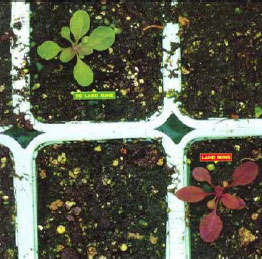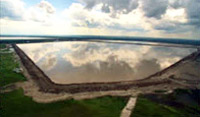Team:TU Delft/Project/introduction
From 2010.igem.org
Introduction on the TU Delft 2010 iGEM Project
Synthetic Biology research comprises a full spectrum of challenging topics, for example the biological production of existing and novel materials, including food and biofuels. In the field of health care scientists focus on diagnostics, drugs and vaccines, an already existing example is the production of the antimalarial medicine artemisinin. A team from the University of Edinburgh has designed and engineered bacteria to function as a biological sensor of arsenic in water (1). In Denmark genetically engineered Arabidopsis thaliana was developed that changes color when exposed to landmine degradation product (2).
This year a team of students from the TU Delft will design a biological system to treat oil-contaminated environments. The project is part of the International Genetically Engineered Machines (iGEM) competition, annually held at the Massachusetts Institute of Technology (MIT). The competition challenges students from around the world to develop new basic biological building blocks, called “bio-bricks”. These biobricks are used to assemble biological systems in model organisms that do not occur naturally, such as oil-degradation pathways.
Challenges in Bioremediation
Bioremediation is defined as the use of biological systems for the treatment of environmental contaminants. All around the world pollution threatens habitats of animals and people. Accidental oil spills are among the most notorious causes of pollution, and afflict major damage to ecosystems, businesses and communities. One of the greatest pollutions is the BP Gulf oil spill, caused by the sinking of the drilling platform Deepwater Horizon. Flowing at up to 2,500,000 gallons (3) of crude oil per day, this disaster will soon outrank the biggest accidental oil spill so far (Ixtoc Oil Spill, 1979, 138 million gallons (4)). Besides, regular industrial activity also causes oil pollution that needs to be taken care of. Considering the size of these operations into account, one can imagine the need for effective and large-scale remediation technologies.In the iGEM competition bioremediation is also a popular topic. Many students believe that engineered organisms might be the solution to many types of pollution. For instance 2009 finalist Team Groningen designed bacteria able to scavenge heavy metals (5).
Current Methods
Several strategies have been developed to clean up oil spills (Table 1), although all methods suffer from drawbacks such as high costs, slow progression and high environmental impact. Sometimes a trade-off must be made between the damages caused by the oil spill itself and the damages inflected by the clean up method. The problem with the use of genetically modified organisms (GMOs) is that these (long-term) effects are unknown.
All the same, the trade off can also be economically. The total clean-up costs of the BP oil spill already exceed 3 billion USD and are expected to accumulate to over 20 billion USD (6). So on this scale a method that is slightly cheaper, already saves a lot of money.
| Method | Description |
| Natural Recovery | No action is taken. Oil is left to degrade naturally. |
| Sorbents | Removal of surface oil by oil-attracting material placed in the water. |
| Booms/Barriers | Contains floating oil until it can be removed. |
| Skimming | Use of draglines and dredges to mechanically remove oil from the surface. |
| Dispersants | Surfactants that break the slick into small particles that mix with water. |
| Solidifiers | Polymerization of oil both floating and stranded. |
| Vacuum | Suction of the free oil from the water. |
Our solution (strategy)
In order to solve the problem of oil in water, as seen in the Oil Sands tailing waters, the iGEM TU Delft 2010 team has designed a strategy composed of various parts. Each part focuses on a certain challenge faced when removing hydrocarbons from aqueous environments. Together, these subparts form a complete chassis for a hydrocarbon-degrading microorganism. Our general strategy is to create BioBricks® that will facilitate each sub-part of our project within E.coli. This will be done by taking specific genes from various organisms from nature and placing them in a BioBrick®, after which there functioning can be evaluated within E.coli.
Part I – Alkane Degradation
First and foremost the organism will have to be able to degrade oil. Oil consists of various hydrocarbon types and sizes, and for this challenge we decided to start with alkanes. There are a number of microorganisms that are known to degrade alkanes, and of these, genes from three different organisms will be used for the conversion of short chain alkanes, long chain alkanes and long chain alcohols and aldehydes, the latter two being intermediates of the long chain alkane degradation pathway. For the further degradation we will rely on the in-house genes of E.coli such as the β-oxidation pathway.
Read more about Alkane Degradation.
Part II – Sensing
In order to have efficient cell growth, it is important to develop a system that activates gene expression at the optimal moment in time. An alkane sensing mechanisms described in literature will be adapted and incorporated using the BioBrick® format. This system will be coupled to the ‘in‐house’ catabolic repression system (crp) generating energy efficient cell growth under glucose conditions as well as produce enzymes for hydrocarbon degradation when needed.
Read more about Sensing.
Part III – Survival
Hydrocarbons and salts in too high concentrations are known to be toxic to cells. It was found that organisms that are naturally hydrocarbon tolerant produce chaperones that maintain the cellular activity. There are also numerous organisms that can live in salty environments. By using genes from these organisms we hope to create BioBricks® that will facilitate salt tolerance as well as hydrocarbon tolerance.
Read more about Survival.
Part IV - Solubility
Oil and water don’t mix; the low solubility of hydrocarbons in water very likely could form a challenge for a hydrocarbon-degrading organism. To overcome this challenge a BioBrick® will be made containing genes encoding for an emulsifier that will increase the solubility.
Read more about Solubility.
In summary, this approach will enable efficient hydrocarbon utilization under non-standard conditions. The chassis, in the form or BioBricks®, will facilitate the construction of strains with sustainable applications in the fossil fuel industry.
References
- Aleksic J, Bizzari F, Cai Y et al. (2007) Development of a novel biosensor for the detection of arsenic in drinking water, Synthetic Biology, IET 1: 87–90.
- Halper, M. (2006) Saving Lives And Limbs With a Weed, Time link
- Achenbach, J. (2010) Oil-spill flow rate estimate surges to 35,000 to 60,000 barrels a day, The Washington Post. link
- Patton, J.S. et al. (1981) Ixtoc 1 oil spill: flaking of surface mousse in the Gulf of Mexico, Nature 290, 235-238
- iGEM Team Groningen Wiki link
- CNN (5 July 2010), BP oil spill clean-up costs exceed $3 billion. link
 "
"

